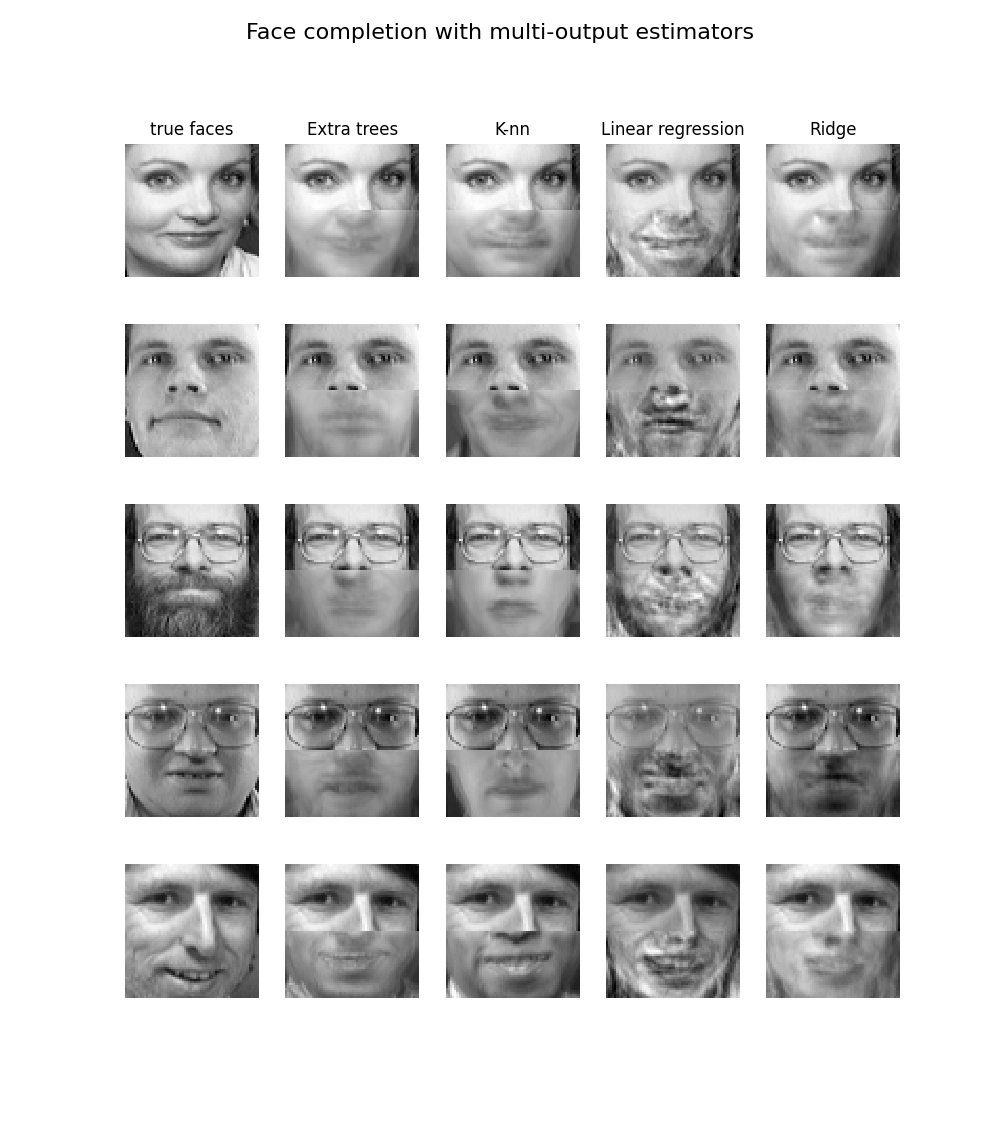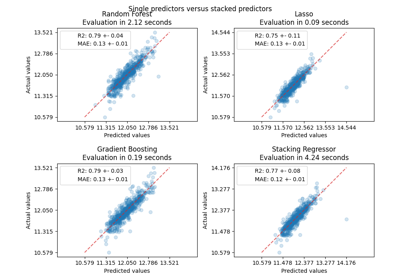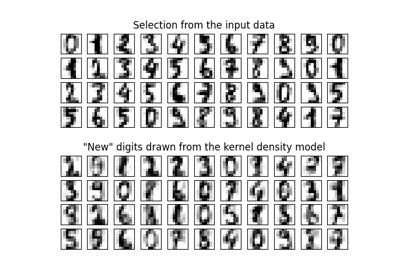Note
Go to the end to download the full example code. or to run this example in your browser via Binder
使用多输出估计器进行人脸补全#
本示例展示了如何使用多输出估计器来补全图像。 目标是根据人脸的上半部分预测下半部分。
第一列图像显示了真实的人脸。接下来的几列展示了极端随机树、k近邻、线性回归和岭回归如何补全这些人脸的下半部分。

import matplotlib.pyplot as plt
import numpy as np
from sklearn.datasets import fetch_olivetti_faces
from sklearn.ensemble import ExtraTreesRegressor
from sklearn.linear_model import LinearRegression, RidgeCV
from sklearn.neighbors import KNeighborsRegressor
from sklearn.utils.validation import check_random_state
# 加载人脸数据集
data, targets = fetch_olivetti_faces(return_X_y=True)
train = data[targets < 30]
test = data[targets >= 30] # Test on independent people
# 在一部分人群中进行测试
n_faces = 5
rng = check_random_state(4)
face_ids = rng.randint(test.shape[0], size=(n_faces,))
test = test[face_ids, :]
n_pixels = data.shape[1]
# 脸的上半部分
#
#
X_train = train[:, : (n_pixels + 1) // 2]
# 面部的下半部分
y_train = train[:, n_pixels // 2 :]
X_test = test[:, : (n_pixels + 1) // 2]
y_test = test[:, n_pixels // 2 :]
# 拟合估计器
ESTIMATORS = {
"Extra trees": ExtraTreesRegressor(
n_estimators=10, max_features=32, random_state=0
),
"K-nn": KNeighborsRegressor(),
"Linear regression": LinearRegression(),
"Ridge": RidgeCV(),
}
y_test_predict = dict()
for name, estimator in ESTIMATORS.items():
estimator.fit(X_train, y_train)
y_test_predict[name] = estimator.predict(X_test)
# 绘制完成的面部
image_shape = (64, 64)
n_cols = 1 + len(ESTIMATORS)
plt.figure(figsize=(2.0 * n_cols, 2.26 * n_faces))
plt.suptitle("Face completion with multi-output estimators", size=16)
for i in range(n_faces):
true_face = np.hstack((X_test[i], y_test[i]))
if i:
sub = plt.subplot(n_faces, n_cols, i * n_cols + 1)
else:
sub = plt.subplot(n_faces, n_cols, i * n_cols + 1, title="true faces")
sub.axis("off")
sub.imshow(
true_face.reshape(image_shape), cmap=plt.cm.gray, interpolation="nearest"
)
for j, est in enumerate(sorted(ESTIMATORS)):
completed_face = np.hstack((X_test[i], y_test_predict[est][i]))
if i:
sub = plt.subplot(n_faces, n_cols, i * n_cols + 2 + j)
else:
sub = plt.subplot(n_faces, n_cols, i * n_cols + 2 + j, title=est)
sub.axis("off")
sub.imshow(
completed_face.reshape(image_shape),
cmap=plt.cm.gray,
interpolation="nearest",
)
plt.show()
Total running time of the script: (0 minutes 4.551 seconds)
Related examples





